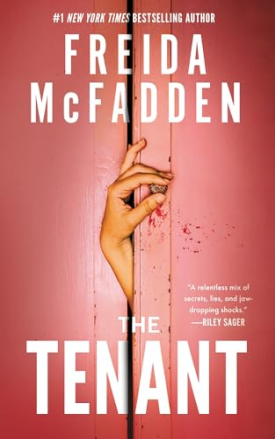Carola Salisbury Books In Order
Book links take you to Amazon. As an Amazon Associate I earn money from qualifying purchases.Publication Order of Standalone Novels
| With Kennedy | (1966) | Description / Buy at Amazon |
| The Pride of the Trevallions | (1975) | Description / Buy at Amazon |
| Dark Inheritance | (1975) | Description / Buy at Amazon |
| Dolphin Summer | (1977) | Description / Buy at Amazon |
| Schloss Mallion | (1977) | Description / Buy at Amazon |
| The Winter Bride | (1978) | Description / Buy at Amazon |
| The Shadowed Spring | (1980) | Description / Buy at Amazon |
| Count Vronsky's Daughter | (1980) | Description / Buy at Amazon |
| An Autumn in Araby | (1983) | Description / Buy at Amazon |
| Daisy Friday | (1984) | Description / Buy at Amazon |
| A Certain Splendour | (1985) | Description / Buy at Amazon |
| Woman in Grey | (1987) | Description / Buy at Amazon |
Carola Salisbury is an English author of gothic romance books. Carola is the pen name for John Michael “Mike” Butterworth. He attended Camberwell College of Arts, where he trained as an artist. He worked at Nottingham College of Art as a tutor and also worked briefly as a salesman before joining the Amalgamated Press. His submissions were accepted for a sea-going adventure strip, which resulted in him being hired as a scriptwriter.
Besides writing, Butterworth worked as an editor and created several magazines and newspapers. His Rise and Fall of the Trigan Empire remains one of the best and most popular scripts penned in the United Kingdom today. He later quit all these and ventured into freelance. His debut novel, The Soundless Scream, was published in 1967, and in later years, he published several crime novels under his full name. He adopted Carola Salisbury and began publishing Gothic romance books.
Carola Salisbury published The Winter Bride in 1978. Charity Carew, captivated by the popular poet Martin Revesby, couldn’t contain her excitement when he responded to her letter of admiration with a job offer as his secretary. Her delight soared as she journeyed to Malmaynes, a strange castle perched on the grim Cornish coast. However, her initial joy was quickly overshadowed by a sense of foreboding. The castle seemed to harbor a malevolent presence. Was it the surly caretaker? Or the sinister deaf-mute? Something or someone stirred a deep feeling of danger within her.
Despite the ominous atmosphere, Charity found solace in her growing affection for the poet. As she settled into her role, she learned about the bloodstained legend of The Beast- a creature believed to be long dead but rumored to still haunt the castle. The dark tale seemed to be just that- a tale- until violence erupted once more, claiming new victims and thrusting the ancient horror into the present.
Charity’s dream of happiness with Martin now stood on the edge of a terrifying chasm. One filled with the revived horrors of the past. The promise of love and safety seemed increasingly unreachable. She found herself caught in a web of fear and uncertainty, where the line between legend and reality blurred dangerously.
Salisbury masterfully blends elements of gothic horror and romance. She creates a narrative that is as gripping as it is haunting. The Winter Bride captures the essence of gothic fiction thanks to the richly developed characters and a plot that twists and turns with every page.
Published in 1952, Dark Inheritance introduces us to Susannah Button. She is the daughter of a tavern owner in a charming Cornish town. At nearly 21, Susannah is surprisingly well-educated for someone of her social standing. There are specific reasons for her advanced education.
Next, we are introduced to the aristocratic Dewaine family. The family consists of Sir Tristan, his son Mark, and his three daughters. They reside in the grand manor house, Landeric, and their lineage traces back to the Norman adventurers who arrived with William the Conqueror, marking their long-standing presence in the area.
As the story unfolds, Susannah faces the devastating loss of her parents, which leaves her orphaned. This tragedy thrusts her into a mysterious situation that leads her to work at Landeric. Initially, there are numerous loose ends, and the connections between Susannah’s background and the Dewaine family are unclear. However, as the story progresses, these threads gradually weave together as they reveal hidden secrets and deeper relationships.
The action then shifts to Venice, a city under Austrian rule. We meet Daniele Manin, a passionate revolutionary leader. His presence signals the rising tension and the struggle for Italian independence. The story further introduces the housekeeper of the Palazzo Dewaine and her enigmatic family. This raises questions about their true loyalties. Are they allies or adversaries in the unfolding drama? Adding to the intrigue is the mysterious Aunt Marianne, who resides at the Palazzo.
The setting is rich with the typical elements of the gothic genre—suspense, intrigue, and unexpected twists. The story keeps readers on their toes with its suspenseful narrative and the occasional surprise that steers the plot in new directions.
In addition to the Venetian escapades, the narrative takes us to the Great Exhibition in Hyde Park, London, in 1851. The depiction of the Crystal Palace, a marvel of Victorian engineering, adds a historical dimension to the story. The introduction of the telegraph at the exhibition highlights the era’s technological advancements. This adds a nice blend of historical facts with the fictional tale.
The transitions between locations and historical events enrich the story and offer a captivating blend of Gothic mystery and historical detail.
Count Vronsky’s Daughter is a must-read for any Tolstoy enthusiast. While it may not reach the same heights as Tolstoy’s masterpieces, it offers a satisfying experience for those who can’t get enough of his world.
The story isn’t without its quirks. It occasionally meanders into side plots featuring famous artists and entertainers. For instance, the artist Henri de Toulouse-Lautrec, known for his diminutive stature, improbably duels for the protagonist’s honor. These detours, though entertaining, can feel tangential to the main plot. This narrative style is reminiscent of Dickens, who often inserted performers into his stories.
Now, let’s get to the core of the story. As we know from Anna Karenina, Anna had two children (Anni and Alexei ) before her tragic suicide on the railway tracks. After her death, her husband took custody of both children, while Count Vronsky returned to his regiment and ultimately met his demise.
This novel picks up with Anni as she comes of age. Following her father’s death, the estate is divided between Anni and Alexei. Alexei, now running with a wild crowd, becomes embroiled in gambling and revolutionary activities. Meanwhile, Anni relocates to Paris to pursue her passion for art.
The plot thickens when Alexei and his revolutionary friend Oliver visit Anni unexpectedly. Amidst a backdrop of city bombings and political unrest, Alexei and Oliver are prime suspects. Anni, caught in their whirlwind, shelters them and inadvertently becomes entangled in their dangerous world.
This book delves into Anni’s journey as she navigates the complexities of art, family, and revolutionary fervor in a rapidly changing world. The characters’ struggles and triumphs are portrayed with a rich blend of historical context and emotional depth, making it a compelling read for those who appreciate the echoes of Tolstoy in a new narrative.
Book Series In Order » Authors »


 Any issues with the book list you are seeing? Or is there an author or series we don’t have? Let me know!
Any issues with the book list you are seeing? Or is there an author or series we don’t have? Let me know!